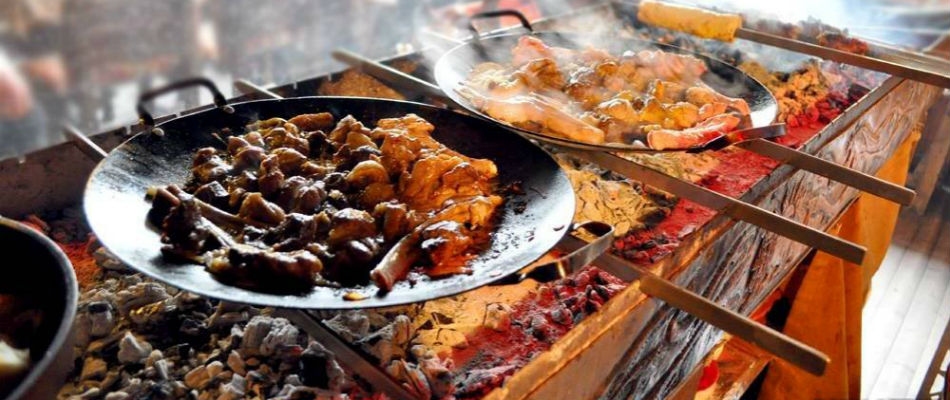
Azerbaijani National Cuisine
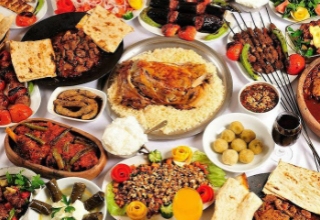
Azerbaijan is one of the oldest countries with ancient history and rich culture in the East. The history of Azerbaijani national cuisine is as ancient as its history. Culinary traditions has also been developed under special conditions. Taste and preparation of Azerbaijani dishes, as well as dark spice and additives, are closer to the Eastern cuisine and are different from other cuisines.
The most important factor influencing the creation and development of the kitchen is the climate. There are 9 climatic zones in our country, which causes the diversity and richness of flora and fauna of the region and considered the main bases for creating a rich kitchen.
At present, in the culinary, the specific features of the ancient cooking methods are kept, while the requirements of modern culinary products are taken into account at a fast pace.
The national dishes of Azerbaijan were made in the past in copper pots. Even in many rural areas today, baked dishes are more delicious. Therefore, items for national Azerbaijani cuisine (boiler, stacker, pans, sini, sponge, etc.) are made of copper.
Let’s get acquainted with delicious cuisine of Azerbaijan.
Plov
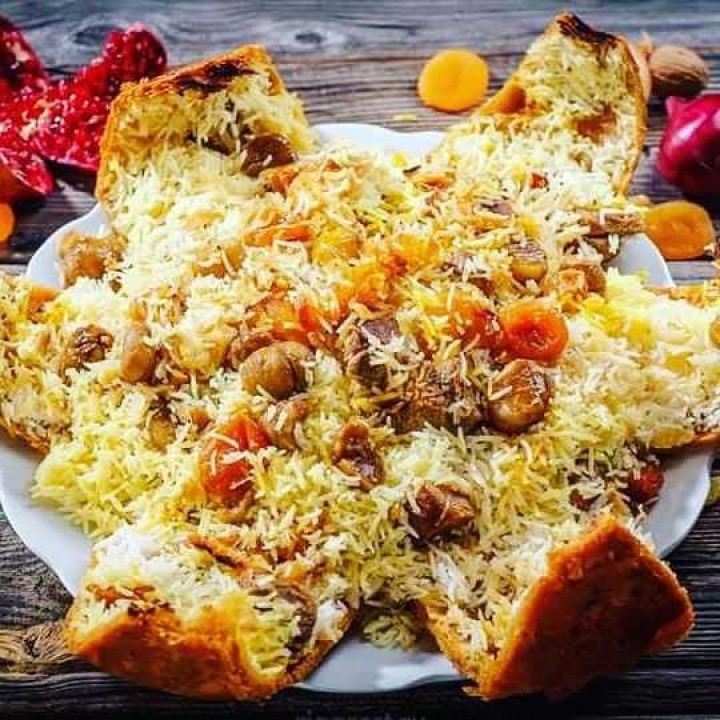 There are 200 kinds of plov in Azerbaijan, and plov is considered "Shah (King) of Azerbaijani cuisine". Azerbaijani plov - consists of rice cooked with saffron and served with special dung-xurush. Dung is mainly made from bird or sheep meat. Alfalfa, chestnut, raisins, apricot can also be added. Many ploves are also served with pickles, eggplants and garlic. Usually, the rice is served on large tablecloths or porcelain plates, so it is covered with slippers. The names of the poultry are due to rice cooking, or blackberry - raspberries, plovals. The masterpiece prepared in Azerbaijani cuisine is cooked with rice, peppermint, dill rice, fruit rice, bean plov, piece plaster rice, crunching rice, roasted rice, roasted rice, roasted rice, roasted rice, rice pilaf and rice varieties are different, not just with their names. A bottle of ayran is used either on top of the platter, or in a cup squeeze. All this has a positive impact on the digestion of fat. The most beautiful and plentiful rice dishes are certainly in Azerbaijan. One of the main reasons why Azerbaijan is in this part of the world is because rooting is the basis of the culture of paddy cultivation, the place where the bush is best planted. The paddle is also a plant that requires hard work.
There are 200 kinds of plov in Azerbaijan, and plov is considered "Shah (King) of Azerbaijani cuisine". Azerbaijani plov - consists of rice cooked with saffron and served with special dung-xurush. Dung is mainly made from bird or sheep meat. Alfalfa, chestnut, raisins, apricot can also be added. Many ploves are also served with pickles, eggplants and garlic. Usually, the rice is served on large tablecloths or porcelain plates, so it is covered with slippers. The names of the poultry are due to rice cooking, or blackberry - raspberries, plovals. The masterpiece prepared in Azerbaijani cuisine is cooked with rice, peppermint, dill rice, fruit rice, bean plov, piece plaster rice, crunching rice, roasted rice, roasted rice, roasted rice, roasted rice, rice pilaf and rice varieties are different, not just with their names. A bottle of ayran is used either on top of the platter, or in a cup squeeze. All this has a positive impact on the digestion of fat. The most beautiful and plentiful rice dishes are certainly in Azerbaijan. One of the main reasons why Azerbaijan is in this part of the world is because rooting is the basis of the culture of paddy cultivation, the place where the bush is best planted. The paddle is also a plant that requires hard work.
Dolma
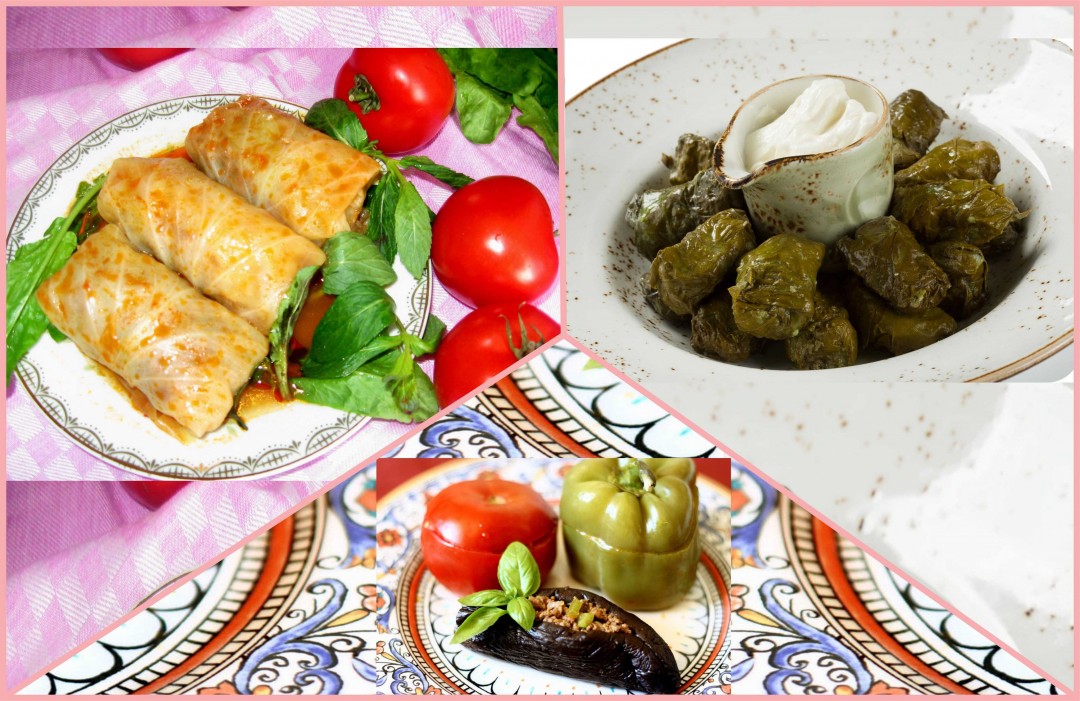
It is one of the oldest national dishes of Azerbaijan. There are about 30 types of stuffing in the world. Dolma is an ancient Turkic word and it is derived from the word "fill". In some regions it is said to be a "rolling". This was taken from the word "roll". There are different types depending on the products and technology used. To prepare dolma, leaves of grape, cabbage, leaves of figs, quince and some other trees (Guba, Gusar) of different types of grapes (white bean, black tea) are used. During the preparation process, very thin and aromatic are chosen. In addition to meat and vegetables, the white fish and salmon fillet were also stuffed when it was cooked beforehand. During the summer season in Azerbaijan is made of stuffed 3 vegetables - eggplant, tomato and sweet pepper. The stuffing of lamb, fragrant skies and spices is filled into this stuffing. This dolma is called "eggplant stuffed". In addition to all the types of stuff we mentioned above (except fillings), yogurt, garlic yogurt or other thickening products are put on the table. In general, there are more than 10 types of stuffing in Azerbaijan, and the word "stuffed" is used in all of these cooking names. In 2017, Azerbaijan has been included in the list of Intangible Cultural Heritage of UNESCO as the "Tradition of Preparation and Distribution of Fodder" as an Indicator of Cultural Identity.
Dushbara
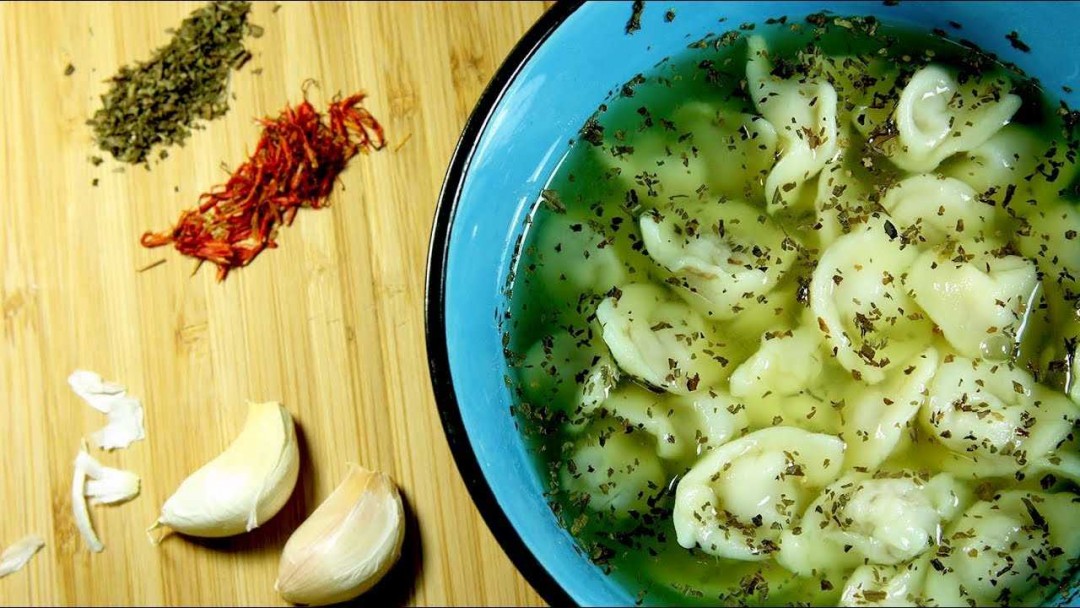
It is one of the famous pastry dishes of the Baku zone. Baked meat is cooked. To prepare falls, brioche is cooked from the bones, cooked with soft onions and spices. The yeast dough is distributed in a thickness of 1 mm thick and cut into small squares. 2-3 grams of grate in the middle of each square. Quadrates are truncated or trimmed and the corners are retracted. Cook the bulb for 5 minutes in the broth. In a home environment, the rice is cooked so small that one spoon is 4 to 5 pieces. At the time of the meals, garlic is put on vinegar and sprinkled with coriander or dry mint.
Khangal
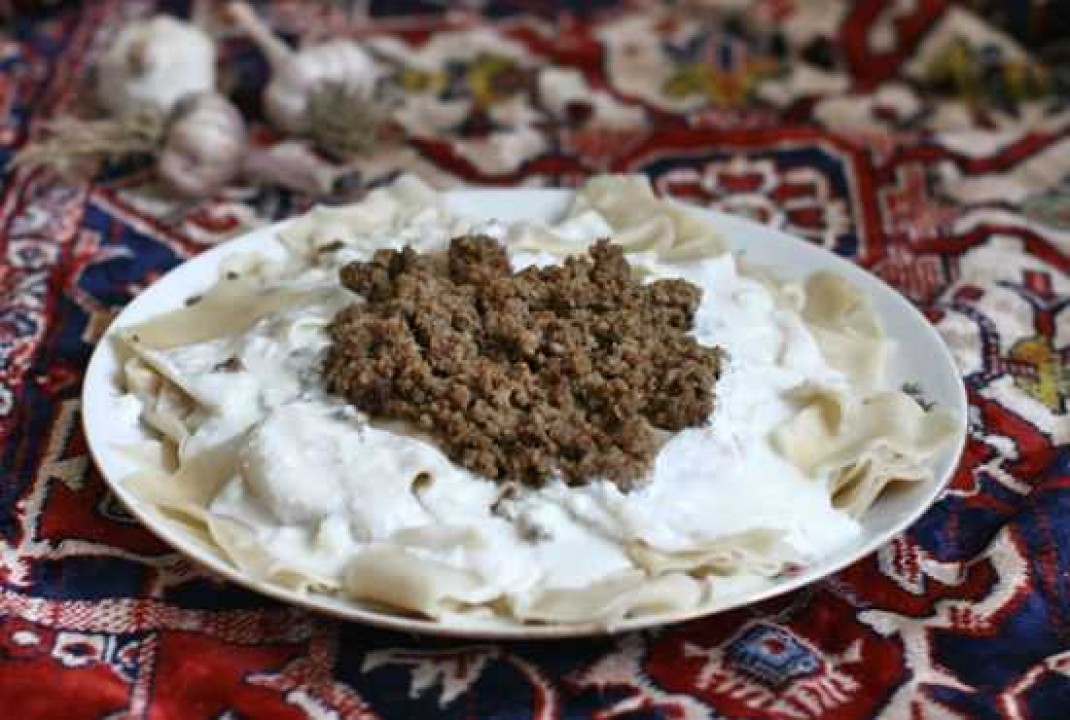
In cold winter days, different cuisine is served in Azerbaijani, and the most popular in Khagal. There are several types of khangal. Buckets cooked in salted water are served on the table with flavored butter, spicy sauce, garlic yogurt, vinegar-garlic, acacia, and even pomegranate juice. These tastes, on the other hand, make the chest more palatable and delicious. Boil in salted water and pour the melted butter on a towel and put on roasted onion and meat. Garlic yoghurt is served next to the khangal. In the western zone instead of regular yoghurt, dried yoghurt is used. In hot water, the dried yoghurt are mixed with crushed garlic and put on a table.
Piti
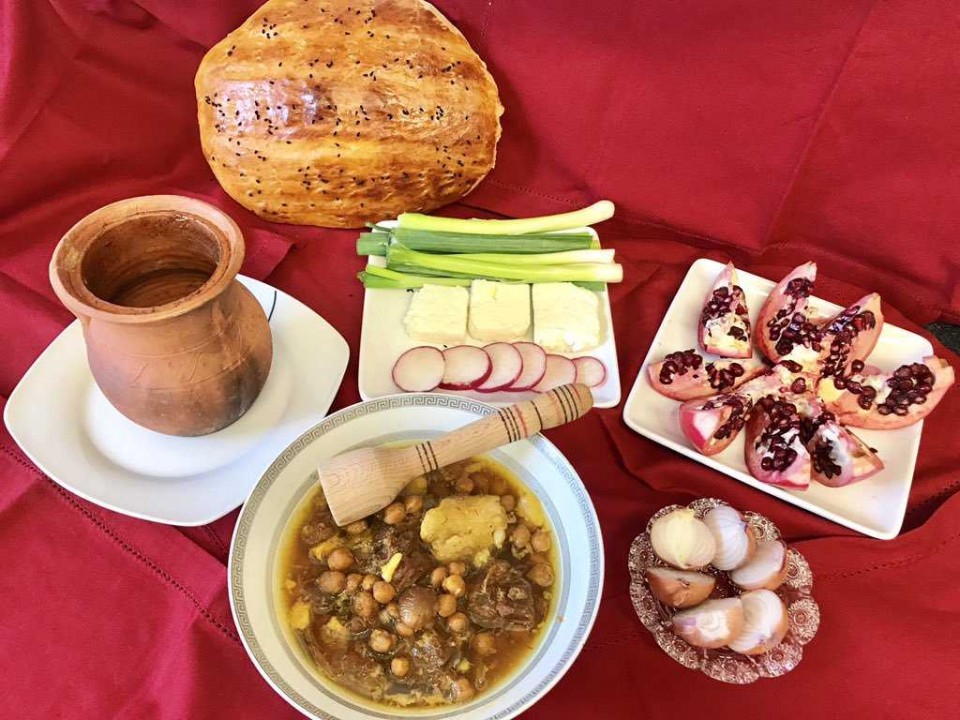
Sheki Piti is one of the pearls of Azerbaijani cuisine. As experienced chefs say, tasty, fragrant and sweet pitti (the ancient Turkish word "pete" - gentle, refined) can only be restored to the strength of tired soldiers, passengers and businessmen. In ancient times, these dishes fed soldiers in military rallies. Piti’s prescription has long ago overgrown the borders of the Turkic world. Now, its similarities are found in the Balkans, Moldova, Georgia and Mediterranean countries under the name of "çanax". If you visit Sheki with her rich cuisine, you should definitely taste the original Shaki pita. The beef (beef) is cut into medium sized tomatoes, put on a bowl with whole onion tail (pre-soaked peas, chestnuts) and pour 4 cups of water. The broth should be transparent. Initially, a strong pan is put. Then the flames are reduced and the lid is placed. Piti is cooked for 2-3 hours. 30 minutes before being ready, it is added to the albuxara (plum dry) and carrots. The ready piti is served only in deep bowls. People eat it like two dishes, first put salt, pepper and sumax on the bottom of the safe, chop the bread and pour water on it. Saturated soup is taken. Then, those in the cup are poured into the plate, added salt, pepper, sumax and eaten. Cooked with pita and small pieces.
Our chefs provide our guests with the unique dishes of our national cuisine. Do not forget to visit us at your next visit to Baku.
